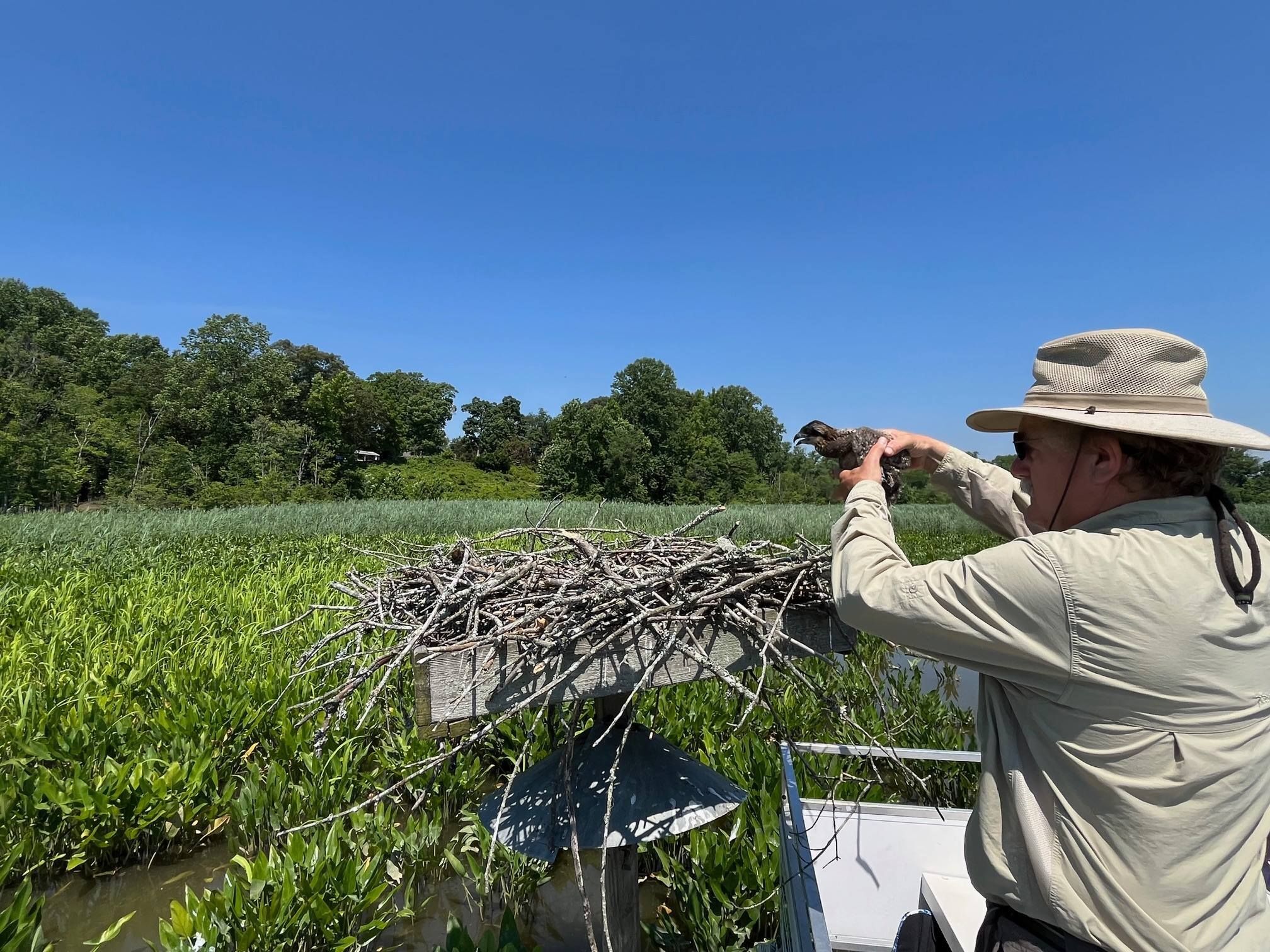
On June 14th, Owl Moon volunteers took part in an osprey banding trip. This was a great opportunity for Nancy, Billy, Patty, Greg W, and Jenny to see these raptors up close and learn more about the challenges they face on the Chesapeake Bay and surrounding tributaries. The osprey population is declining. While not all causes are known, changing climate conditions (e.g., a cold, wet spring this year) and low menhaden fish populations seem to be contributing to the dwindling numbers of nests successfully fledging chicks. Owl Moon rescues a significant number of ospreys every year, including fledglings. Many times the original (natal) nest cannot be accessed. Owl Moon developed a partnership with Greg Kearns, Senior Park Naturalist for the M-NCPPC, to find suitable foster nests to place chicks in to be cared for until they fledge and migrate. So far this season, Owl Moon received two osprey babies. The one we currently have in care lost a parent and became emaciated from lack of food. We are currently feeding him up before release–while there are nests we could foster him in, we have to be careful not to overburden a nest due with another mouth to feed in these extreme resource-limited conditions.
Greg Kearns showed the volunteers Patuxent River osprey platforms that in years past were occupied and are now left empty. A few nests did have chicks and passengers observed the various development stages of the growing osprey. One of the nests had a chick old enough to band, so Kearns demonstrated how banding is conducted. The chick is given a quick health check, weighed, and fitted with an aluminum federal bird band that stays on the osprey's leg for life. Each band has a unique number, and Kearns is required to record that number, as well as the estimated sex of the osprey, weight, date, time, Greg's full name and nest location using either GPS coordinates or latitude/longitude, as he is required by federal law to enter this data into the national bird banding database (Bander Portal). This information is maintained by the U.S. Geological Survey (USGS). This banding trip gave everyone on board a better understanding of the challenges ospreys face and the ongoing search for solutions to help stabilize the population. For more information about Chesapeake Bay osprey, we recommend reading this article.
